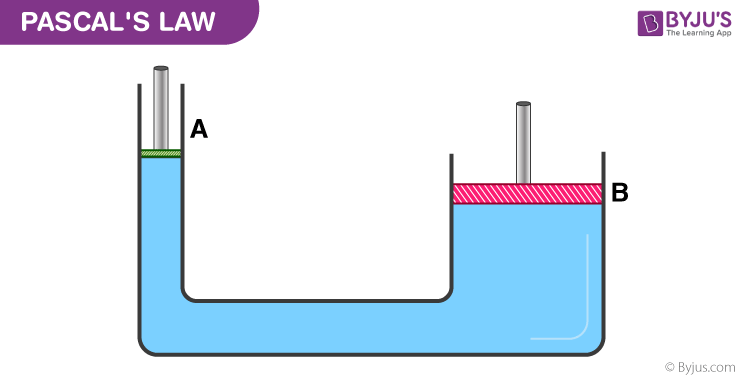According to the CBSE Syllabus 2023-24, this chapter has been renumbered as Chapter 9.
Fluids are substances which move or flow in a certain direction when an external force is applied to them. Fluids can be either gases or liquids. However, when we study fluids and their mechanical properties, we come across two topics namely hydrodynamics and hydrostatics.
See Also: Fluid Dynamics
What is Hydrostatic?
Hydrostatic is basically concerned with fluids at rest while hydrodynamics deals with fluids which are in motion.
What is Pascal’s Law?

When a fluid is at rest, the pressure on the liquid is the same at all points provided, they are of the same height. The change in pressure which has been applied to the fluid which is enclosed can be transmitted undiminished to every point of the fluid and the container vessel’s walls.
When an incompressible fluid is passing every second in a pipe of non-uniform cross-section, the volume will be the same as the steady flow. Bernoulli’s principle is an equation which states the conservation of energy of non-viscous fluid motion in a steady state.
Read More: Viscosity
What is Reynold’s Number?
Reynolds number is referred to the onset of turbulence in a fluid flow which can be determined by a dimensionless parameter.
What is Surface Tension?
It is referred to the force per unit length which is acting on the plane of the interface between the bonding surface and the liquid. It is the amount of extra energy which the molecules at the interface have when compared to the interior.
For more information on Fluid Mechanics: Surface Tension, watch the below video

| Also Access |
| NCERT Solutions for Class 11 Physics Chapter 10 |
| NCERT Exemplar for Class 11 Physics Chapter 10 |
Important Questions
- Explain why
- (a) The blood pressure in humans is greater at the feet than at the brain
- (b) Atmospheric pressure at a height of about 6 km decreases to nearly half of its value at the sea level, though the height of the atmosphere is more than 100 km
- (c) Hydrostatic pressure is a scalar quantity even though the pressure is force divided by area.
- Explain why
- (a) The angle of contact of mercury with glass is obtuse, while that of water with glass is acute.
- (b) Water on a clean glass surface tends to spread out while mercury on the same surface tends to form drops. (Put differently, water wets glass while mercury does not.)
- (c) The surface tension of a liquid is independent of the area of the surface
- (d) Water with detergent dissolved in it should have small angles of contact.
- (e) A drop of liquid under no external forces is always spherical in shape Students can check out some of the important chapter topics below;
- Pressure
- Viscosity
- Streamline Flow
- Surface Energy
- Surface Tension
- Atmospheric Pressure and Gauge Pressure
- Pressure in Bubbles, Drop and Capillary Rise
- Bernoulli’s Principle
- Reynold’s Number
- Hydraulic Machines
- Pascal’s Law
In addition to Mechanical Properties of Fluids, students can also download the sample papers, important questions and last year’s question papers of physics class 11 below. Physics Sample Paper Class 11
Physics Important Questions Class 11
Previous Year Question Paper Of Physics Class 11 CBSE
Stay tuned to BYJU’S and learn physics topics with engaging video lectures and class-wise notes.
Further Reading:
| Pascal law and its application | Surface Tension |
Frequently Asked Questions on CBSE Class 11 Physics Notes Mechanical Properties of Fluids
What is meant by a laminar flow?
A laminar type of flow is when a fluid (gas or liquid) flows in a smooth pattern (regular path).
What are some of the uses of hydrostatic pressure?
1. Measure blood pressure 2. Proper lung inflation
What is the use of surface tension?
1. Responsible for the shape of liquid droplets 2. Improve the quality of the products 3. Plays a part in our body’s ability to transport materials
Comments